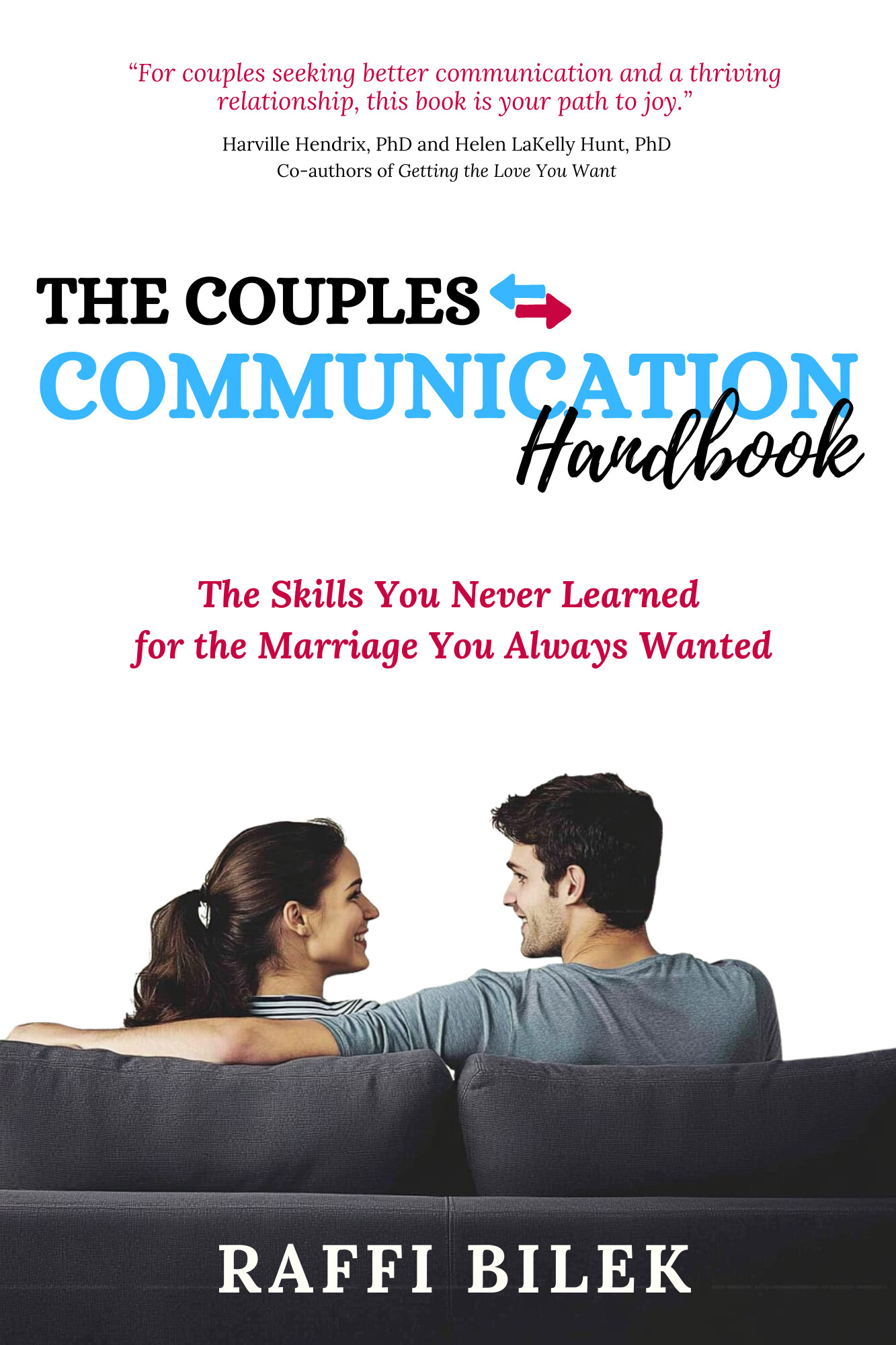How Partners Can Help Each Other In The Healing Process


Addiction recovery can be difficult, but a supportive partner can make this journey a lot easier. Couples who heal together are usually self-motivated as they opt for mutual healing. So, for someone who is struggling with addiction or knows someone who is, inpatient rehabs offer comprehensive care and support. They appreciate the role of family during the healing process and extend genuine support in helping recovering couples with the required assistance. Read on as we walk you through how your spouse can help you in your healing process.
The Effects of Addiction on Family Relationships
Addiction is one of the major concerns and top reasons why marriages fail. During this, it takes a great toll on the emotional and psychological health of the two people involved. For instance, you can have trust issues which shake the foundation of your relationship. Moreover, an addicted partner tends to make matters worse by complicating issues. Promises are often broken, which hurts your other half.
This lack of communication boosts your silence gaps. And if this continues, the possibility of meaningful and deep conversations is slim to none. In the end, you are left with a marriage that is nothing but just a broken bond which no one is trying to mend. Thus, helping your spouse break free from addiction and restoring the marital bond is crucial. In this regard, Blueview Recovery in Pennsylvania can be of assistance. Their family and couples therapy expertise ensures that you must hop on a meaningful journey to get genuine inner healing.
What Help Can Spouses Provide In The Recovery Process
Without a doubt, support from a spouse is vital during the recovery process of not just the individual, but even the couple. Below are some of the ways spouses can help one another:
1. Acknowledge the Addiction
Acknowledging addiction as a complex issue is crucial. You must look at its behavioral, biological, as well as social aspects. This way you understand the disease at its core and it protects you in countering harmful expectations. Additionally, knowing how addiction functions and what its effects are makes it easier to give support and patience through the recovery process.
2. Listening With Empathy
Listening with empathy without interruptions or judgments is powerful. Empathic listening helps your spouse articulate their fears, regrets, and hopes while calming their need to be understood. During early recovery, showing support by validating feelings instead of offering advice can be more effective in the first place.
3. Professional Support Should Be Suggested
Gently guide your spouse to a clinic and try to actively help them by searching for clinics and going with them to the appointments.
5. Open Conversation
Kindly and gently explore the next steps to recovery with your spouse. Use empathic language instead of judgemental remarks so that trust and emotional intimacy can be strengthened despite feelings and challenging moments shared.
6. Actively Participate In Therapy Together
Attend couple or family therapy if available. It contributes to resolving communication problems as well as active healing and nurturing.
Advantages of Including Your Partner in the Healing Stages of Recovery
Addiction recovery is often a challenge due to the absence of support from professionals and other people around the individual. Husband or wife’s participation during the recovery process can multiply the results. The best part of it? It is a win-win situation for both. How? You help your partner to recover, and in result, your marriage gets better with time giving you the same old days vibes. Additionally, research indicates that encouraging spouses positively impacts success within the treatment, the rate of relapse and the emotional involvement. Let’s explore this further.
1. Boost Motivation and Achievements
A spouse plays an instrumental role in achieving successful recovery among their partners. This partnership enhances concentration as well as the achievement of the recovery goals in the long run.
2. Assist in Healing the Bond within the Marriage
The recovery period is the perfect opportunity to bring back the shattered pieces of trust and intimacy that addiction tore apart. Spouse’s support has the power to boost their role as supporters and thus help in couple repair.
3. Learn Together The Addict’s Triggers and Mechanisms to Alleviate Tension
Both participants can learn together the triggers and mechanisms that help in managing the addiction and therefore work together to support the recovery sessions.
4. Decrease of Isolation and Risk of Relapsing Episodes
Isolation is a challenge faced during a relapse. During this, you can feel quiet and lonely. And what happens when you’re alone and sad? You’re drawn to something you’ve been taking a break from. Therefore, when a spouse stays emotionally connected, the recovering person does not feel as lonely as they might feel individually. This connection goes a long way to preventing relapse during stressful or low moods.
5. Enhancing the Bond for the Future
Restoration Therapy not only alters an individual but their marriage as well. Couples that decide to undergo this challenging journey together typically emerge with deeper connections, heightened respect for one another, and renewed levels of commitment.
Couple Treatment Options Available for Recovery
Joint treatment resolves both the issues arising from the use of substances and attempts to heal the damaged relationship that addiction brings. Here are some of the options you may consider.
1. Behavioral Couple Therapy (BCT)
BCT is one of the most popular therapies offered. It tries to eliminate substance abuse by enhancing unhealthy relational behavioral patterns between the spouses and building their relationship from scratch. This therapy is part of couples rehabilitation which increases relationship satisfaction and helps in recovery.
2. Family and Relationship Outpatient Programs
Outpatient programs work well because they enable participants to attend couples therapy while living at home. This works well for a number of couples balancing full-time jobs and taking care of kids. The programs incorporate individual counseling as well as group therapy with joint sessions, making it thorough while enabling clients to retain their daily activities.
3. Couples Intensive Outpatient Programs (IOPs)
These IOPs are helpful for couples that require more support than is commonly provided in outpatient services. These programs provide higher levels of attention to treatment than what is acceptable in more basic outpatient programming. Blueview Recovery in Pennsylvania, for example, offers intensive outpatient programs (IOPs) which may include several hours each week dedicated to therapy sessions on relapse prevention, emotional self-regulation, and co-regulation.
4. Co-Rehabilitation Programs (Couples Rehab)
Some centers provide residential or inpatient programs where both partners are fully involved during the treatment duration. The focus of these programs is to achieve recovery together through joint counseling, support group therapy, and classes on healthy relationships.
5. Customized Care Plans
Effective treatment for couples does not assume both partners share equal burden of addiction. Recovery dynamics can shift so one partner plays the role of a “recovering spouse” while the other takes on the “supporting spouse.” Through individual evaluations, professionals address couples’ cross relational interdependence with specially tailored treatment pathways and collaborative couple goal setting.
6. Aftercare and Team-Based Relapse Prevention Plan
In this type of treatment therapy, dedicated sessions with scheduled check-ins for couples are offered in post-formal treatment phases. Moreover, pre-formal treatment joint relapse prevention strategies are also practiced. After going through the initial support phase, couples tend to find it easier to maintain progress amidst real-world challenges without reverting to old patterns.
Conclusion
Mutual support during addiction recovery provides a strong foundation to strengthen relationships and promote addiction recovery. Couples who are truly motivated and professionally guided can set clear boundaries, understand addiction, communicate, and work through challenges. As a unit, they can heal individually and together.
How to Be a Better Husband: A Practical Guide for Married Men


Marriage is an oath of commitment, trust, respect, communication and honesty between two people. Every man who is married should strive for these qualities in his relationship and always work to be a better husband.
While no human is perfect, there are always areas to improve upon. Personal growth, emotional intimacy, and mutual respect are some of the most important ones. Even small acts and daily habits can go a long way in strengthening your marriage.
Being a good husband isn’t about being fancy or flashy, it’s being there for your partner consistently and in meaningful ways. Whether that’s spending quality time together, actively listening, or communicating more effectively, they will all have a positive impact.
Let’s learn more about how to be a better husband and a greater human being.
What It Means to Be a Good Husband
Arguably the most important aspect of being a good husband is the ability to embrace emotional intelligence.
Emotional intelligence is all about understanding your partner’s feelings. It’s important to recognize their needs, and respond to them accordingly. It first starts with learning your partner’s love language. It can be through affectionate words, acts of service, quality time, physical touch, or receiving gifts.
By understanding how your partner feels loved, you can tailor your actions to make your partner feel deeply appreciated.
Mutual respect goes hand-in-hand with emotional intelligence. This means valuing your partner’s opinions, aspirations, goals, and personality. It’s about making them feel like an equal partner in all aspects of your marriage, whether it’s decision making, daily responsibilities, or long-term plans.
Active listening is a simple yet effective way to show respect. When you listen without judgment or interruption, you create a safe place for your partner. This allows your spouse to share their thoughts and feelings openly.
Practicing self-awareness is another essential step. Take time to reflect on your habits, communication, and actions. Small things, like saying “thank you” or acknowledging their efforts, can make a big difference in building a healthy relationship.
Appreciating the little ways your partner contributes to the marriage allows for a deeper emotional connection and helps you as a person.
Building Healthy Relationships That Last
Healthy relationships are built on emotional intimacy and honest communication, both of which are crucial for a happy marriage.
It requires vulnerability and trust. That can only be achieved when both partners create a safe place for each other. It can be sharing your fears, dreams, or even the little things that make you happy.
When was the last time you had a deep, meaningful conversation with your spouse? Regularly having these discussions can strengthen your bond immensely. Overthinking may get in the way of having these conversations. Instead of focusing on perfection, focus on being present and honest.
Honest communication is just as vital. It’s not always easy, but it’s the best way to stop issues before they grow into larger problems. Conflict resolution skills are a big part of this process. Instead of avoiding disagreements, approach them as opportunities to better understand each other.
Focus on the issue at hand and avoid personal attacks. Use “I” statements, like “I feel hurt when…” rather than “You always…” to express your feelings in a non-confrontational way. This approach can turn conflicts into discussions that build trust.
When challenges feel overwhelming, there’s no shame in seeking help. Many married couples find that marriage counseling or joining a support group can provide tools for tough times.
A marriage counselor can offer guidance for your specific situation, while support groups allow you to connect with others who have experienced similar struggles. These resources can provide a healthy way to address issues and ensure you and your spouse feel supported.
Even small moments of kindness and understanding can pave the way for great marriages. When you prioritize emotional intimacy and open communication, you create a relationship that’s built to last. But, remember that the other person in the relationship has to try and express their needs too.
Remember, it’s the big things and the little things combined that contribute to a truly healthy relationship.
Spending Quality Time with Your Partner
Spending quality time with your partner is one of the most effective ways to support your relationship. In the hustle and bustle of everyday life, it’s easy for married couples to let their connection take a back seat to work, children, and other responsibilities.
However, prioritizing your marriage can go a long way in keeping your bond strong. Quality time doesn’t have to be extravagant; it’s about being present and engaged with your partner.
Planning weekly date nights is a great way to prioritize your relationship. Whether it’s a fancy dinner, a movie night at home, or even a walk in the park, these are the moments that allow you to reconnect and enjoy each other’s company.
A long conversation during these dates, free of distractions like phones or work, can help you understand your partner’s perspective on life, your marriage, and any challenges you may be facing. When was the last time you and your spouse had a meaningful talk like this?
Appreciating the small moments in your everyday life together is equally important. A random act of kindness, like making their favorite coffee in the morning or offering a compliment, can make your partner feel loved and appreciated.
These little ways of showing care create a sense of closeness that lasts beyond any grand gesture. It’s often these small things that help build emotional intimacy and strengthen your connection.
Balancing your own life and family responsibilities is another aspect of spending quality time effectively. While personal goals and self-care are important, ensuring that your partner doesn’t feel neglected is key.
It’s about finding a middle ground where both your individual needs and your relationship are prioritized. This balance can create a stronger relationship and a more harmonious household.
Practical Ways to Strengthen Your Marriage
Strengthening your marriage doesn’t require dramatic changes; often, it’s the small gestures that have the most impact.
Writing love notes or sending thoughtful text messages during the day can remind your spouse that you’re thinking of them. These simple things may seem minor, but they go a long way in making your partner feel valued and loved.
Gifting items can also be a great way to show appreciation. Instead of focusing on expensive gifts, think about what your partner truly enjoys or needs.
For example, a gift card to their favorite coffee shop, a book from a best seller list they’ve been wanting to read, or even a handwritten letter can carry a lot of meaning. These small things show that you’ve taken the time to consider their preferences and happiness.
Another powerful way to strengthen your marriage is by showing genuine interest in your partner’s goals and dreams. Ask about their aspirations, offer support, and celebrate their achievements together.
When you take an active role in their personal growth, it creates a deeper emotional connection and mutual respect. This is a great way to remind your partner that you’re not just their spouse but also their biggest supporter and even their best friend.
It has also been shown that helping other people can strengthen the bond between you and your spouse.
Don’t underestimate the power of small gestures in a happy marriage. They serve as daily reminders of your love, making it easier to deal with the challenges that life will inevitably bring.
By showing up for your partner in these little ways, you build a foundation of trust, care, and affection that can benefit your relationship for years to come.
Managing Finances and Shared Responsibilities
Managing finances and shared responsibilities is an essential part of building a happy marriage. Money often becomes a point of conflict in marriages, but addressing these topics openly and proactively can lead to a stronger relationship.
A good starting point is to have an honest discussion about shared bank accounts, spending habits, and financial goals. Transparency in these areas helps build trust and ensures both partners are on the same page.
It’s important to create a budget that aligns with your shared priorities. For instance, consider the national average for household expenses and adjust it to fit your own marriage’s needs.
Discussing priorities, such as saving for a home, planning for retirement, or budgeting for medical care, can reduce potential conflict. This approach demonstrates that you’re both invested in the future of your marriage.
Shared responsibilities extend beyond finances and include managing household tasks and parenting duties. Dividing these responsibilities fairly is crucial for maintaining harmony.
For example, if one partner takes care of cooking, the other can handle cleaning or helping the kids with homework. When both partners contribute equally to the household, it creates a sense of teamwork and prevents resentment from building up over time.
Another key aspect of managing finances and responsibilities is setting practical goals together. These goals can include saving for a family vacation, paying off debts, or even supporting each other’s personal goals, such as pursuing further education or a new career path.
Working towards these objectives as a team strengthens your bond and provides a sense of accomplishment that you can celebrate together.
Ultimately, the best way to deal with finances and shared responsibilities is through communication and a willingness to compromise. By following these aspects, you create a stable and supportive environment.
Learning from Relationship Experts and Resources
When it comes to improving your marriage, seeking advice from relationship experts and utilizing helpful resources can provide invaluable guidance.
Books by authors like Gary Smalley, known for his insights on marriage and emotional connection, can serve as a great guide for couples looking to strengthen their bond. These best sellers often provide actionable tips and strategies that are easy to implement in your daily life.
Another great way to gain perspective is by finding a marriage therapist who can give you advice specific to your situation.
This professional support can be a turning point for many couples and is an excellent resource for those who feel they need help in their relationship.
In addition to therapy, consider exploring tools for personal growth that can benefit your marriage. For example, practicing self-awareness, improving emotional intelligence, and setting personal goals can help you become a better partner.
These efforts not only enhance your own life but also contribute to the overall health of your relationship. As you grow as an individual, you’ll find it easier to connect with your spouse on a deeper level.
Attending a support group for married men or couples can introduce you to others who have experienced similar challenges. Sharing stories and advice in these settings builds a sense of community and can offer practical solutions to common issues.
Whether you’re learning from books, therapy, or support groups, the key is to remain open to new ideas and willing to put in the hard work. Great marriages don’t happen overnight; they require effort, patience, and commitment.
By using the knowledge and resources available to you, you can take steps toward creating a happier marriage.
Strengthen Your Marriage
Being a better husband is an ongoing journey that requires dedication, patience, and love. Small things, like showing interest in your partner’s needs or practicing active listening, can lead to stronger marriages.
Remember, every moment is an opportunity to deepen the emotional connection between you and your spouse.
While there’s no such thing as a perfect husband, striving to improve will make a significant difference. With hard work and a focus on the things that matter, you can build a relationship that grows stronger with every day that passes.
Commit to being the best husband you can be for the rest of your life, and the rewards will be endless.
5 Tips on Choosing the Right Rehab Treatment Program

Getting sober is a motivating and revolutionary step in your life. Choosing the best fit for you can be overwhelming with so many rehab programs available. Having the right treatment program that caters to your unique needs. A good treatment program will provide you with individualized treatment, science-based treatments, and a recovery setting that will support long-term sobriety. The following five tips will help you choose a rehab program that will suit you.

Consider Inpatient vs. Outpatient Programs
Inpatient rehab is usually most suitable for someone who has a severe addiction or someone who has a life at home that is not stable. Inpatient rehab provides a structure to a day of therapy with a doctor’s supervision.
Being an inpatient in an inpatient facility, the individual will have distraction time to work only on their recovery process. Alternatively, outpatient therapy allows the individual to remain at home and visit for therapy, which can be individual, group therapy, or family therapy. It is for less severe or moderate addiction and for cases where the client has work or family obligations.
You will always want to consider whether you can stay committed and be self-therapeutic every day without the luxury of ongoing supervision and whether you need medical detox, which occurs in inpatient rehab and not outpatient rehab.
Inquire about its flexibility, as some outpatient and inpatient programs have a hybrid model and offer both types of treatment. Weighing the pros and cons of both treatment options with your circumstances could be conducive to deciding on the best addiction recovery program for you. We want to make sure you balance the effective treatment options to get the treatment you need with what is practical so you can fully engage in recovery.
Assess for Aftercare and Relapse Prevention
Recovering from substance use disorder is not a singular event that ends when you leave the rehab facility; all ongoing support is necessary to avoid the disease of addiction and significantly reduce the chance that someone will relapse.
The best programs will have a solid array of aftercare services, such as an alum group, outpatient counseling, or sober living environments, to assist you in successfully transitioning back to everyday life while still staying sober. Some programs utilize relapse prevention strategies like coping skills programs or connecting you with appropriate support groups.
Some facilities help patients locate local 12-step meetings or peer mentoring to help ensure the transition back to the community. All of this is to avoid relapse, and you may want to ask about opportunities for aftercare sup, how long it is available, and if there is any cost involved.
Good quality programs with a serious commitment to relapse prevention emphasize aftercare and long-term recovery planning. In short, a facility with good aftercare services provides maximum available resources and options.
These programs will give you an advantage when leaving the rehab setting. In part, you will have tools and support available to be otherwise successful after leaving the facility. Moreover, good aftercare supports and reinforces skills you learned during rehab to help avoid relapse from your substance use or addiction.
Study The Staff’s Qualifications
The knowledge and compassion of a rehab program’s staff members can significantly affect your recovery experience. Look into the qualifications of the staff, from doctors and therapists to counselors. Above all, one whose treatment incorporates licensed professionals like addiction specialists, psychologists, or certified counselors should be the aim when one is seeking treatment for their specific addiction.
It’s also important to ask the facility if the staff received evidence-based therapy training or how they involved patients. You want to identify programs that use empathy and respect with patients. Some programs employ multi-disciplinary personnel with titles such as nutritionists, fitness trainers, or spiritual mentors; although they will not cure your addiction, they will help support recovery in a setting that is open to everyone.
Meet staff on facility visits to assess their professionalism and friendliness during first impressions. Choosing a program with highly qualified and professional staff will increase your chances of receiving personalized treatment that is also effective during your recovery journey of finding sobriety.
Consider the Site and Environment
The site and surroundings of a rehab facility may also play a part in recovery. Some people will prefer to be close to home for family support, while others may benefit from a geographical distance to avoid any triggers and focus entirely on recovery. You should also consider the environment of the facility.
Urban facilities may have more items readily available for clients to work on in the program, while rural facilities may add peace and tranquility to the process with less distraction. You should visit the facility or do a virtual tour to gather information about living conditions, facilities, and the environment in general.
Cleanliness, comfortable surroundings, and access to fitness centers or recreational spaces can motivate clients. You should ask questions concerning the policies for visitors, the use of cell phones, and personal items.
You want to be comfortable with the facility being supportive vs. limiting. Having a positive and nurturing environment is vital to your engagement in treatment, so consider the location and facility that fits your comfort level and helps you establish a mindset and environment to support your recovery.
Know Costs and Insurance Coverage
Costs of rehab vary significantly, so knowing the costs is very important. Receiving a breakdown of expenses, including treatment (medical and/or therapy), housing, meals, and additional costs such as detox/ aftercare will be necessary. Some programs may have sliding fee scales or provide scholarships for individuals who cannot afford to pay for services.
You need to be sure that you are aware of whether your insurance is covered and what type of services you receive under your insurance because most insurance will cover addiction treatment in the fee schedule of mental health. You need to phone your insurance carrier to inquire about coverage and copays.
If you are not covered, you can search for state-funded facilities or facilities with a nonprofit organization that offers low-cost treatment. You should be cautious of unregulated facilities that promote services that are not appropriate for an individual.
If a facility can communicate costs and upfront fees and provide flexible options, they are conscious of an individual’s aptitude to afford rehab. By asking detailed questions about costs, you can identify a quality rehab program without burying yourself in debt so that you can focus on recovery.
Endnote
Selecting the most suitable rehab treatment program for your recovery is a big part of your recovery journey. Once you decide on your individual needs, you research accredited and licensed treatment centers, and you read up on treatment methods, you have a solid basis for your achievement.
Some of your choices will include inpatient or outpatient treatment, whether you have a strong aftercare plan, checking the qualifications of the staff, and multiple other factors. It’s well worth considering the nature of the setting and cost of the facility so that you can help you have some level of supportive recovery experience. Do not be afraid to consider each option, ask each question, and even have the help of a professional if you must have one decide this for you.
A quality rehabilitation treatment plan isn’t only fulfilling your short-term requirements, but it gives you the right tools and guidance to make sure that you can create your sobriety support system. Now that you have these eight tips, you’re prepared to make an informed decision on a recovery treatment plan to help you achieve a healthier, happier, drug-free future.
Teamwork in Autism Parenting to Boost Family Relations


Parenting a child diagnosed with Autism Spectrum Disorder (ASD) can be a rewarding yet challenging journey. This neurodevelopmental condition, characterized by difficulties in communication, social interaction, and repetitive behaviors requires a unique approach to parenting.
For families, the key to successfully navigating this journey is teamwork. Parents, guardians, siblings, and other family members must come together to support the autistic child, improving the child’s quality of life and overall familial relationships. Let’s take a closer look at how teaming up in autism parenting can enhance relationships.
The Importance of Teamwork in Autism Parenting
Raising an autistic child often requires a collaborative effort. No single person can shoulder the responsibility alone, and teamwork will ensure that the child will receive consistent care and support. When parents and family members work together, they can work through the emotional, physical, and financial challenges for a more harmonious family.
Teamwork also allows all family members to leverage their strengths. For instance, a parent might excel at organizing therapy schedules, while another might be able to connect with the child emotionally. If you live closer to extended family members like grandparents, aunts, and uncles, they can also play an important role in providing respite care, financial assistance, and emotional support.
Pooling different skills and resources helps families create a robust support system that will benefit them and the autistic child.
Challenges of Autism Parenting and How to Overcome Them

Teaming up in autism parenting is essential, but there are some challenges that families can face when raising an autistic child. These can make it difficult for the family to support the autistic child, both financially and emotionally.
1. Financial Challenges
One of the most significant challenges that families face is the financial burden of autism treatment. Therapies such as applied behavior analysis (ABA), speech therapy, and occupational therapy can be expensive. Sadly, not all insurance plans cover these services. There are other expenses, too, like specialized schools, assistive devices, and respite care that can add to the financial strain.
For families struggling with these costs, there is SSI for autism which provides financial support. The Supplemental Security Income (SSI) is a valuable resource that provides financial assistance to low-income families with disabled children.
2. Communication Barriers
Another challenge is communication, as autistic children often struggle with verbal and non-verbal communication. This can make it difficult for parents to understand their needs and emotions. To overcome these challenges, families can learn alternative communication methods like picture exchange systems, sign language, and assistive technology.
What’s more, parents should work together to be on the same page when using these tools so as not to confuse the autistic child, especially if the child is younger. Parents and guardians should also explain these communication methods to their other children and extended family members.
3. Behavioral Challenges
Repetitive behaviors, sensory sensitivities, and meltdowns are common in autistic children. These behaviors can be very overwhelming for parents and siblings. To manage these challenges, families can work together to create a more predictable environment.
Visual schedules, sensory-friendly spaces, and clear routines can reduce anxiety and prevent meltdowns. Family members, especially parents, can work together to create the best environment for the child.
4. Emotional Stress
Another challenge is the emotional tax that comes with parenting an autistic child. Parents might experience feelings of guilt, frustration, or isolation. As for siblings, they might feel neglected or resentful.
Open communication within the family is important to address these emotions. Regular family meetings, where everyone can express their feelings and concerns to foster understanding and empathy.
5. Time Management
Balancing the demands of autism parenting with work, household responsibilities, and personal time can be very overwhelming. Parents might find it hard to balance all these activities when taking care of their autistic child.
However, families can divide tasks and responsibilities to ensure no one is overburdened. For instance, one parent can be in charge of therapy appointments while the other parent manages school-related tasks.
Tips for Strengthening Familial Relationships

Teamwork in autism parenting does not only benefit the child but can also strengthen familial relationships. It’s essential to foster a supportive and loving family environment and avoid conflict between family members over caring for that special member.
1. Celebrate Small Wins
With autism parenting, progress can come in small steps so don’t expect giant leaps. Celebrate every achievement in your family, regardless of how minor it might seem. Positive reinforcement can boost the confidence of the autistic child and strengthen family bonds. But balance is important as parents have to avoid neglecting other children while focusing on the autistic child. Celebrate everyone’s wins equally and boost familial relationships.
2. Prioritize Self-Care
Parents, guardians, and caregivers should also take care of their own physical and mental health. When family members are properly rested and emotionally balanced, they can better support the child. Parents should have date nights and all siblings should have their own hobbies and activities. Encourage each other to take breaks, pursue hobbies, and seek professional help.
3. Involve Siblings
Siblings play an important role in the family dynamic too. You can involve the older ones in the caregiving process and encourage all your children to spend quality time together. This will strengthen sibling relationships between them and their autistic sibling.
4. Maintain Open Communication
Honest and open communication is very essential in teaming up in autism parenting. Regularly check in with each other to discuss challenges, share successes, and express gratitude. This can create a culture of understanding and mutual support.
5. Create Family Rituals
Your family should have traditions like weekly game nights or weekend outings. These will provide a predictable environment for your autistic child and also create a sense of normalcy and togetherness. They will also provide opportunities for bonding among all family members.
Connecting with Others and Seeking Professional Help
No parent or guardian should navigate autism parenting alone. Connecting with other families who are on the same journey can provide emotional support, a sense of community, and practical advice. You can join local autism support groups, online forums, and social media communities to learn from others and share your experiences.
Also, financial guidance can improve family support, which will make a major difference in autism parenting. Therapists, counselors, and support coordinators can provide parents and guardians with strategies for managing the challenges of autism and improving the child’s development.
Family therapy can be advantageous too, because it will address the dynamics between the family members and boost collaboration between parents. Schools and educational institutions usually have resources for families of autistic children.
Individualized education programs (IEPs) and 504 plans ensure that the child receives the necessary accommodations and support in the classroom. Partnering with teachers and school staff can boost your child’s educational experience.
Work Together in Your Autism Parenting Journey
Parenting an autistic child requires love, patience, and teamwork. By working together, parents can create a nurturing environment that supports the autistic child’s growth and development while strengthening their relationships. Financial, emotional, and behavioral challenges can be daunting, but working together with the entire family can enrich the support. All in all, autism parenting is not only about caring for the child, but it’s about building a resilient, compassionate, and united family. By embracing teamwork, parents and guardians can create a loving and inclusive home for their autistic child.
Family Science 101: What It Is and Why It Matters

 Sometimes, family is all we have. Nobody knows you like your parents, grandparents, or siblings, as they’ve shaped the way you are today, for better and worse. They make up an important cornerstone of our society, yet the study of families and their dynamics has not always been formalized.
Sometimes, family is all we have. Nobody knows you like your parents, grandparents, or siblings, as they’ve shaped the way you are today, for better and worse. They make up an important cornerstone of our society, yet the study of families and their dynamics has not always been formalized.
Family Science as a field emerged to provide an evidence-based approach focused on relationships to better understand how family systems work. This social science discipline can be a useful tool to look at how the nuclear family has changed over time.
For example, women used to be stay-at-home mothers, but now they’re often as equally involved in the workplace as their male counterparts. In part, this is due to increased accessibility to tertiary education and shifting social dynamics that allow women to engage in specialized careers from law at top-tier schools to nursing through nursing degrees online.
This article will explore what family science is, have a look at its historical development, and talk about why it is an important lens to view the world through in the modern era.
What is Family Science?
Family science is an interdisciplinary field, mainly discussed through a social science lens, that focuses on the study of families and close interpersonal relationships. A number of different aspects are part of the discipline: marriage, parenting, family dynamics, communication patterns, and how external factors like culture and economics affect family life. Essentially, family science aims to understand how families operate, especially in the face of challenges, and how the strengths and weaknesses of families in different situations can inform preventive action for others. The field has a massive scope, bringing in aspects of sociology, psychology, public health, and even economics, as the reality of the family unit is that it is complicated and must be informed by as much information and as many perspectives as possible.
The History of Family Science
Researchers like Sigmund Freud and Emile Durkheim were the first to formally explore the roles and functions of families within the fields of sociology and psychology. Durkheim viewed the family as a fundamental social institution that was a key part of keeping the world around us cohesive and running smoothly. Freud, on the other hand, was more focused on how family changes us psychologically, with a particular interest in how early childhood experiences impact the development of our personality later in life.
The first formal course in family-related study emerged just before the Second World War in 1938 at the University of Chicago, indicating growing recognition of the importance of family studies. Post-WWII gave rise to the nuclear family model as a response to the economic instability of the early 20th century in the United States. Returned soldiers were encouraged to start families in closely defined units so as to stimulate the economy and prevent economic situations that would lead to a repeat of The Great Depression.
In the 1950s and 60s, family science programs started to spring up around different American universities, with many focused on understanding marriage, family dynamics, and how these affected growing young minds. The discipline continued to evolve in the latter half of the 20th century, shifting as women gained more rights, beginning with Ronald Reagan signing a bill in 1969 that allowed a married person to seek divorce without the consent of their spouse.
Suddenly, there did not have to be a precedent for women to leave marriages they were not happy in, granting much-deserved independence and signaling a massive win for the feminist movement. As families evolved, the nuclear family was no longer de-facto: single-parent families, blended families, and same-sex parent families all began to emerge leading into the 21st century.

Why does Family Science Matter?
Some disciplines are focused purely on academic pursuits, but family science has real-world implications that have the power to affect change for many people and can massively contribute to the sustainability and well-being of a society.
First of all, there are family relationships to consider. Can you think of a time when your parents didn’t understand you as a teenager? It’s something that many of us experience, and with formal studies that look at communication strategies and conflict resolution, it doesn’t have to end in tears or a screaming match. Families are all about working together, and family science can help strengthen these relationships by providing real strategies that work to build the bond you have with those you care about most.
Looking more broadly, family science can be a great tool to inform public policy. Evidence-based insights can be used by policymakers to design programs to support the development of a healthy society. For example, child welfare and parental leave guidelines can be difficult to write without studies to refer to, so family science can play a valuable role in formalizing details which are often hidden.

Finally, family science can give us insight into how familial structures and dynamics vary with culture. Our globalized society is more diverse than ever, and cross-cultural interactions are part of everyday life. As a result, understanding more about parenting styles, marriage, and elder care from people of different cultures can help with cultural sensitivity and celebration, and perhaps inform how we can understand neglected aspects of familial care in our own cultures. Diversity represents an opportunity to learn from one another, and the formalization and universality of this learning is what makes family science so useful.
Family science seems like a simple field from its name, but it is anything but. In order to provide a deep understanding of the complex dynamics of families, this area of study has to dive into many different sociological aspects of what makes up a family.
From its early roots in sociology and psychology, it has evolved into a unique and complex area of its own, all to address the changing needs of families in a world that continues to evolve and surprise. Modern life can be challenging, but with the insights provided from family science, we can improve life at home one step at a time.
Understanding The Gottman Method: An Overview for Couples

Technically called the Gottman method for healthy relationships, this system represents the culmination of John Gottman’s life work and a partnership with his wife, Julie Gottman.
Gottman’s Early Work
Over the course of his academic career, Gottman became interested in relationships, marriage, and divorce. In 1986, Gottman opened what was dubbed the ‘love lab’ to investigate the science of relationships. Some of the remarkable research conducted in this lab includes a longitudinal study that could predict the likelihood of divorce with over 90% accuracy using the tools Gottman and others had developed, like the ratio of positive to negative SPAFF codes, the Four Horsemen of the Apocalypse (Criticism, Defensiveness, Contempt, and Stonewalling), physiology, the rating dial, and an interview they devised called the Oral History Interview.
As you can imagine, the results of these studies and their highly accurate predictions became incredibly well known, but Gottman was not finished. In 1996, John and his wife Julie Gottman founded the Gottman Institute to help train clinicians in their methods and help people have healthy relationships.
The Four Horsemen of the Apocalypse
Gottman came up with a simple analogy to better describe the negative communication styles that, according to his research, can predict the end of a relationship, called the Four Horsemen of the Apocalypse, referring to the four behaviors that are most destructive to a relationship.
- Criticism. The Gottman method for healthy relationships views criticism as an attack on your partner’s character rather than addressing specific behaviors. Unlike a complaint, which focuses on particular issues, criticism is an ad hominem attack that undermines your partner’s entire being. For example, saying, “I was worried when you were late and didn’t call. I thought we agreed to notify each other,” targets a specific behavior. In contrast, criticism would be, “You never care about how your actions affect others. You’re selfish and always think of yourself.” Persistent criticism can lead to feelings of rejection and hurt, creating a pattern that intensifies over time and opens the door to more damaging relational issues.
- Contempt. The second horseman looks at how the use of sarcasm, mocking, name calling, and aspects of body language like eye rolling undermine any relationship. Contempt goes beyond criticism because the contemptuous person assumes moral superiority, making the other person feel less-than. An example could be belittling a partner for resting after work by accusing them of being lazy and pathetic–in doing so; you are directly attacking their personality. Contempt is highly damaging, and Gottman even found that contemptuous of each other are more likely to suffer from infectious illness and is the strongest predictor of divorce. It stems from long-standing negative thoughts and must be addressed and eliminated for a relationship to survive.
- Defensiveness. Defensiveness is when you make excuses or play the victim instead of taking responsibility. For example, if asked why you didn’t do something, you might say, “I was too busy. Why didn’t you do it?” This response shifts the blame and dismisses your partner’s concerns. Instead, a better approach is to admit your mistake and show understanding. Defensiveness usually makes conflicts worse, as it prevents healthy communication and keeps problems unresolved.
- Stonewalling. Stonewalling happens when someone withdraws from a conversation, stops responding, and avoids dealing with issues, often as a reaction to feeling overwhelmed by negativity. This can include behaviors like tuning out, acting busy, or distracting themselves. While it might feel like an escape, stonewalling usually becomes a harmful habit that’s hard to break. If you catch yourself stonewalling, pause the discussion and ask for a break to calm down. Spend 20 minutes doing something soothing, like taking a walk, and then return to the conversation when you’re ready to engage constructively.

The Seven Principles of Making Marriage Work
The Gottman method for healthy relationships is comprised of seven key principles:
- Building Love Maps. Gottman’s research has repeatedly posited the idea that couples must come from a place of understanding and that being emotionally educated about their partner’s world is the best way to build a basis of understanding. The easiest way to do this in an organized format is by using one of the many exercises like love map questionnaires that both you and your partner can complete with or without a therapist. Activities like this with well-designed questions prompt a far better understanding of your partner’s world.
- Share Fondness and Admiration. A key factor Gottman identified that results in divorce or contributes to negative feelings in relationships is a simple lack of respect. The act of sharing fondness and admiration can counteract this by reinforcing positive feelings and mutual appreciation. Regularly expressing gratitude, admiration, and respect for your partner helps build a strong emotional connection and fosters a positive atmosphere. Small gestures like compliments or kind words can go a long way in maintaining respect and deepening the bond between partners, ultimately supporting a healthier, more resilient relationship.
- Fostering Positive Interactions. A lot of life is how you look at it. The act of fostering a positive perspective and seeing the best in each other is emphasized in the Gottman Method. This principle encourages couples to see the best in each other and engage in positive interactions that strengthen their bond.
- Turning Towards Each Other Instead of Away. Perhaps the easiest way to improve any relationship is to use what Gottman calls “bids” for attention. These bids for emotional connection can be small things like asking a partner, “What have you been up to?” or “How do I look?” These simple questions prompt your partner to turn their attention toward you instead of away.
- Learning to Manage Conflict. Arguments where someone feels like they must win are not good for marriages. Gottman promotes methods for managing conflicts that teach you how to let go of the need to always be right or to “win” in a relationship. But in a relationship, if one partner is “winning,” then both are actually losing. That’s why it’s so important to learn to accept your partner’s influence and work together.
- Making Life Dreams Come True. One of the most beautiful things about companionship is having someone who will encourage you and help you achieve your goals and dreams in life. This can look like supporting your partner in going back to school to get an additional qualification or encouraging them to take up a hobby they have always wanted to try.
- Creating Shared Meaning. Every couple knows at least some of what their shared interests are… and which interests aren’t. The very act of partnering with someone is creating a commonality. Gottman studied the strength of rituals and found that even simple things like spending time with your partner at the end of the day or going out for coffee stimulate connection.

Conclusion
The Gottman method for healthy relationships is a popular and well-researched approach to couples counseling (though it’s not the only one). It’s taught widely in professional programs, from traditional marriage and family therapy degrees to programs offering an online Masters in Mental Health Counseling.
This overview just touches on some of the basics and provides some ideas to consider for improving your relationship. If you’re looking for more help with your relationship, feel free to contact us today for more ideas and support.

